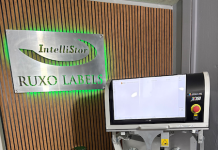As the new year hurtles towards us and we collectively hold our breath, edge our way tentatively towards normality and dip a toe into post-pandemic waters, the world may seem almost unrecognisable to the one in 2020.
Thankfully, though, it seems our environment may have been breathing a sigh of relief whilst the human race was taking this unplanned pitstop. Air quality has significantly improved across cities worldwide, water pollution and greenhouse gas emissions have reduced, and the ecological system has been given a well-needed breather as pressure on tourist destinations eased over the past year.
Whilst completely unexpected, the opportunity for a turning point in our global environmental efforts seems to have presented itself – and at a time when many businesses will have been forced to slow down, re-strategise and consider their working practices, emerging into a changed business landscape.
It is no surprise, then, that the use of plastics has never been far from the media’s gaze over recent months – and with packaging accounting for 40 percent of it, the environmental pressures – and arguably opportunities – for brand owners, packagers and converters have genuinely never been greater. So, as the packaging industry thankfully charges back up again and regains full steam, how can we help our businesses achieve true sustainability?
The pressure to rethink and reduce the use of plastic in packaging and innovate greener solutions has undoubtedly reached fever pitch. It is no longer an option for sustainability to be just a corporate responsibility tick-box or a footnote on a company’s mission statement for those who want to truly thrive in the packaging market and have brand integrity shine through in their work. Plastic waste initiatives such as the New Plastics Economy’s ‘Global Commitment’ – whose signatories now make up at least 20 percent of the plastic packaging market – are driving brands to truly push the envelope in sustainability and focus on fostering a wider and authentic systemic shift towards a more sustainable future.
Thankfully, however, we are already beginning to see the print and packaging sector rise to the challenge and evolve quickly to support these goals. Perhaps the most obvious step in reducing waste is to improve the recyclability of end products, where brand owners can make small and easy switches that pack a big environmental punch.
Where many seemingly ‘recyclable’ products often still head for landfill due to their need for costly, highly specialised recycling processes, businesses are helping brands to switch from traditionally used plastic polyethylene (PE) laminates to water based barrier coatings that can be widely and easily recycled using standard practices.
PVC-free and plasticiser-free sealing compounds comprise blends of carefully selected thermoplastic elastomers to ensure that there is no migration of harmful substances from the packaging into the food it protects. The business benefits for authentically sustainable brands are no surprise, however, as we continue to see an ever-more educated and environmentally savvy consumer base. In fact, research shows that businesses who best manage their environmental and social impact are more profitable in the medium to long term.
However, this environmental and social impact goes far beyond what happens to the end product, with opportunities to boost sustainability across the entire production line. Clever and innovative solutions are revolutionising container label decoration by combining minimal-waste hybrid printing techniques with state-of-the-art application machinery – resulting in a ‘face-stock free’ transfer decorating technology that significantly reduces the landfilled waste created in traditional pressure sensitive label printing.
Naturally, as part of their commitment to integrate genuinely ecologically-friendly solutions, many companies – large beverage producers in particular – also strive to conserve packaging material, where possible. This not only protects the environment but also reduces production costs.
Indeed, one sustainable solution is to reduce the amount of steel in standard crown corks and use thinner ones. Compound solutions make it possible to reduce the thickness of crown corks by up to 0.4 grams and protect the filled beverage. That doesn’t sound like much, until you consider that more than 300 billion crown corks are used worldwide each year. This could mean a metal saving of around 120,000 tons per year.
Realistically, it is inevitable that plastics will, to some degree, remain an integral part of the packaging industry for the foreseeable future, to protect food and beverage products, for example. After all, they’re versatile, durable and lightweight, meaning they actually have the potential in some cases to enable fuel savings and therefore lower emissions – not to mention affording us enormous reductions in food waste.
However, with eco-conscious businesses continually working to innovate for greener alternatives, boost recyclability, reduce both production and end-product waste, and champion the highest standards of safe and ethical practices, the outlook for the packaging landscape is looking increasingly hopeful. With pioneering businesses decisively and authentically putting sustainability at their heart, the packaging industry will be able to move ever closer to a truly sustainable future.
ACTEGA
https://www.actega.com/





















